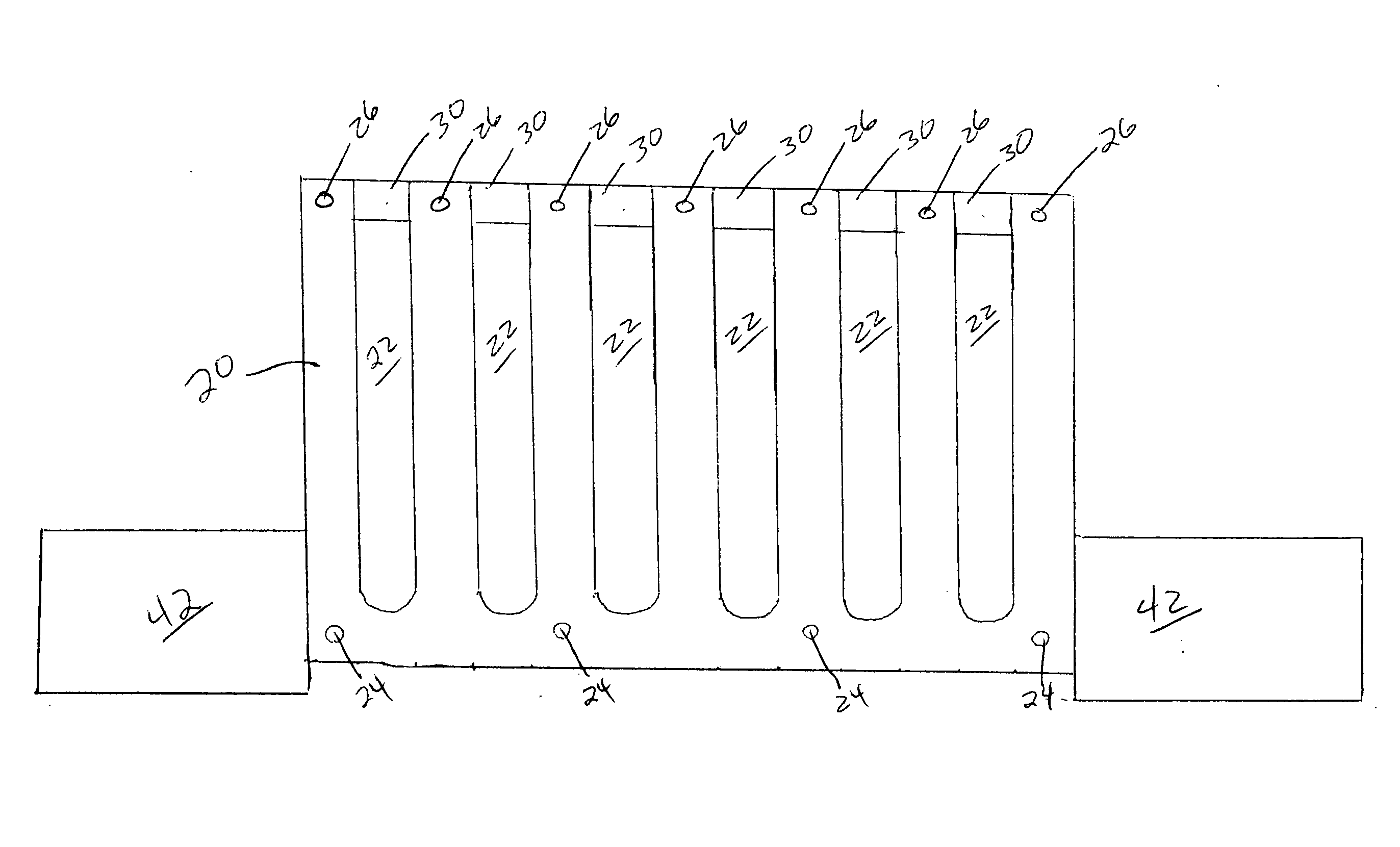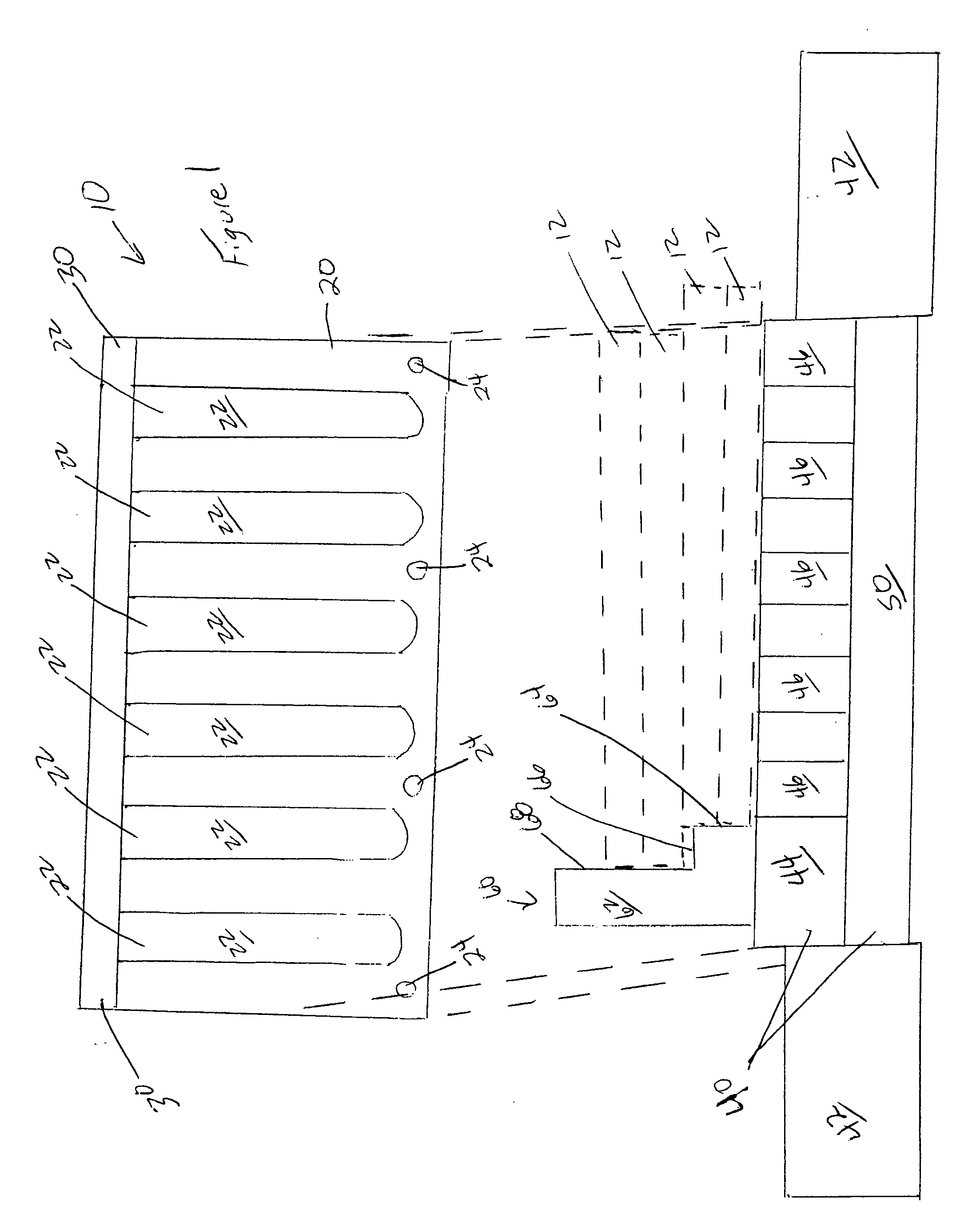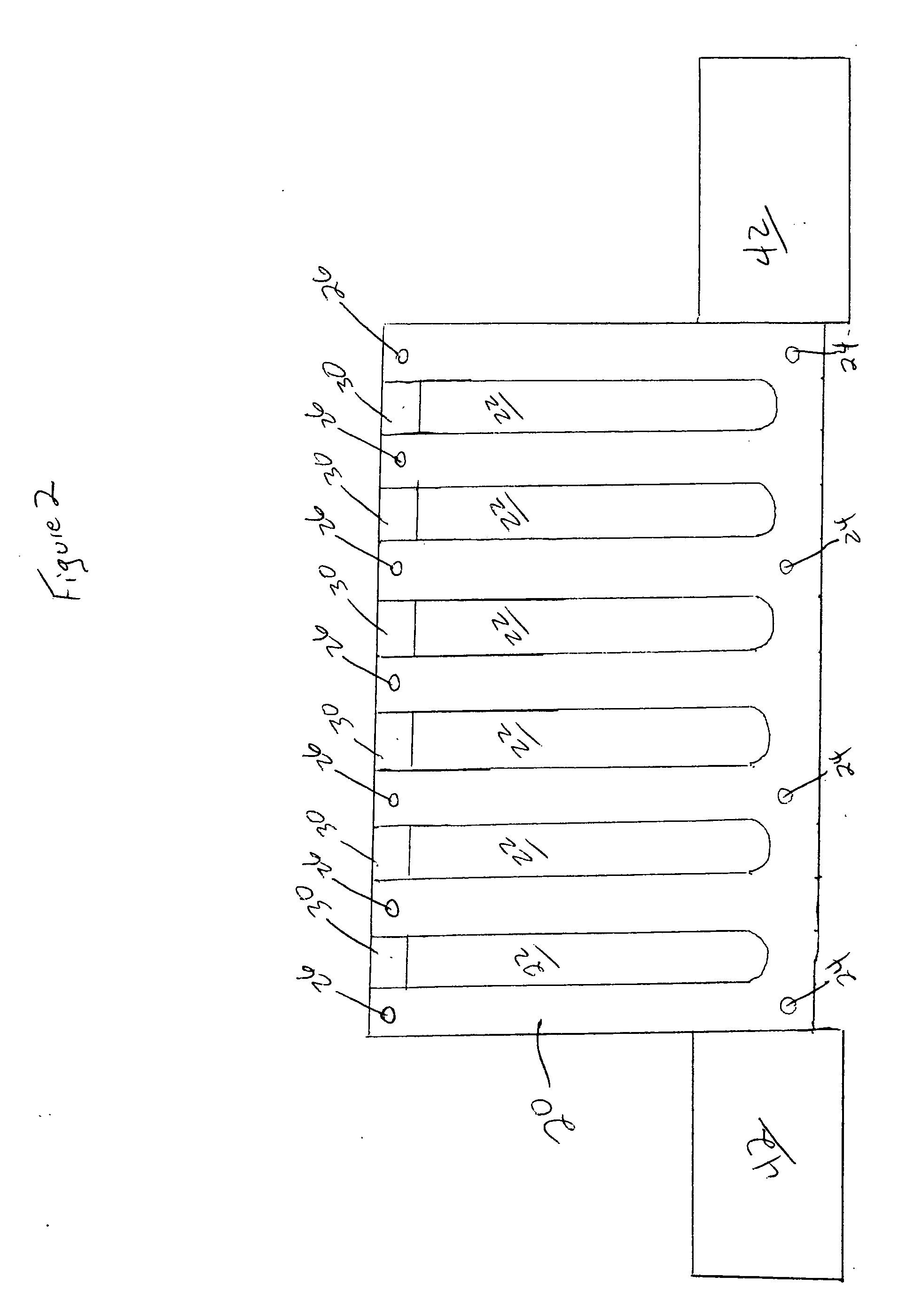Jig for forming a box joint
a box joint and joint technology, applied in the field of joints for cutting wood, can solve the problems of adding to the limitations of the joints, wasting wood, and all the complexity of the cutting of the joints
- Summary
- Abstract
- Description
- Claims
- Application Information
AI Technical Summary
Benefits of technology
Problems solved by technology
Method used
Image
Examples
Embodiment Construction
[0024] The box joint jig 10 may include a bottom plate 20, a front plate 30, a back plate 40, a back alignment member 60, a bottom alignment member 80, a router bit 90 and an adapter 92. The jig 10 is used for forming box joints 14 as shown in FIG. 7. The jig 10 simultaneously orients four boards 12 and guides the router bit 90 such that the router bit 90 cuts the routes 16 for all four boards 12 in a single sweep. These components are discussed in serial fashion below.
[0025] The bottom plate 20 may be joined to the front plate 30 and back plate 40. (See FIGS. 1 and 2). The plates 20, 30 and 40 may be joined with fasteners 24 and 26 respectively, may be cast, molded or otherwise formed integrally, or may be joined in any other manner known in the art. The bottom plate 20 defines grooves 22, which extend through the bottom plate 20 and provide access for the router bit to boards 12 positioned atop the bottom plate 20.
[0026] The bottom plate 20 may be interchangable with other botto...
PUM
 Login to View More
Login to View More Abstract
Description
Claims
Application Information
 Login to View More
Login to View More - R&D
- Intellectual Property
- Life Sciences
- Materials
- Tech Scout
- Unparalleled Data Quality
- Higher Quality Content
- 60% Fewer Hallucinations
Browse by: Latest US Patents, China's latest patents, Technical Efficacy Thesaurus, Application Domain, Technology Topic, Popular Technical Reports.
© 2025 PatSnap. All rights reserved.Legal|Privacy policy|Modern Slavery Act Transparency Statement|Sitemap|About US| Contact US: help@patsnap.com



